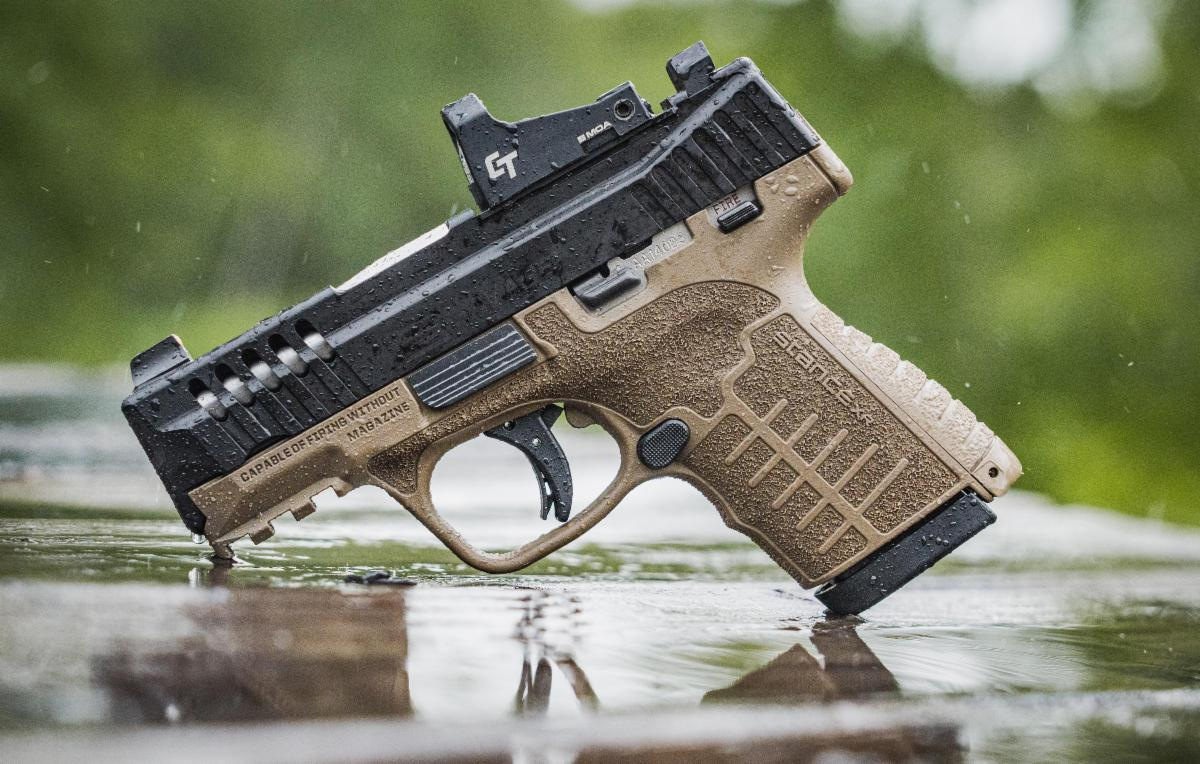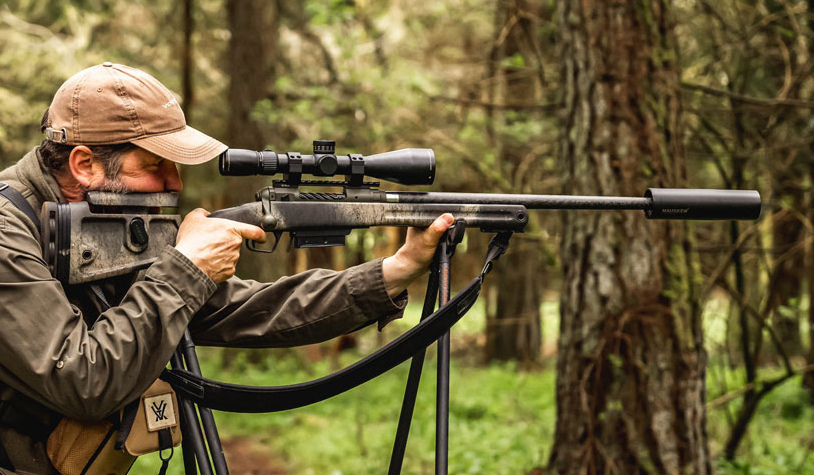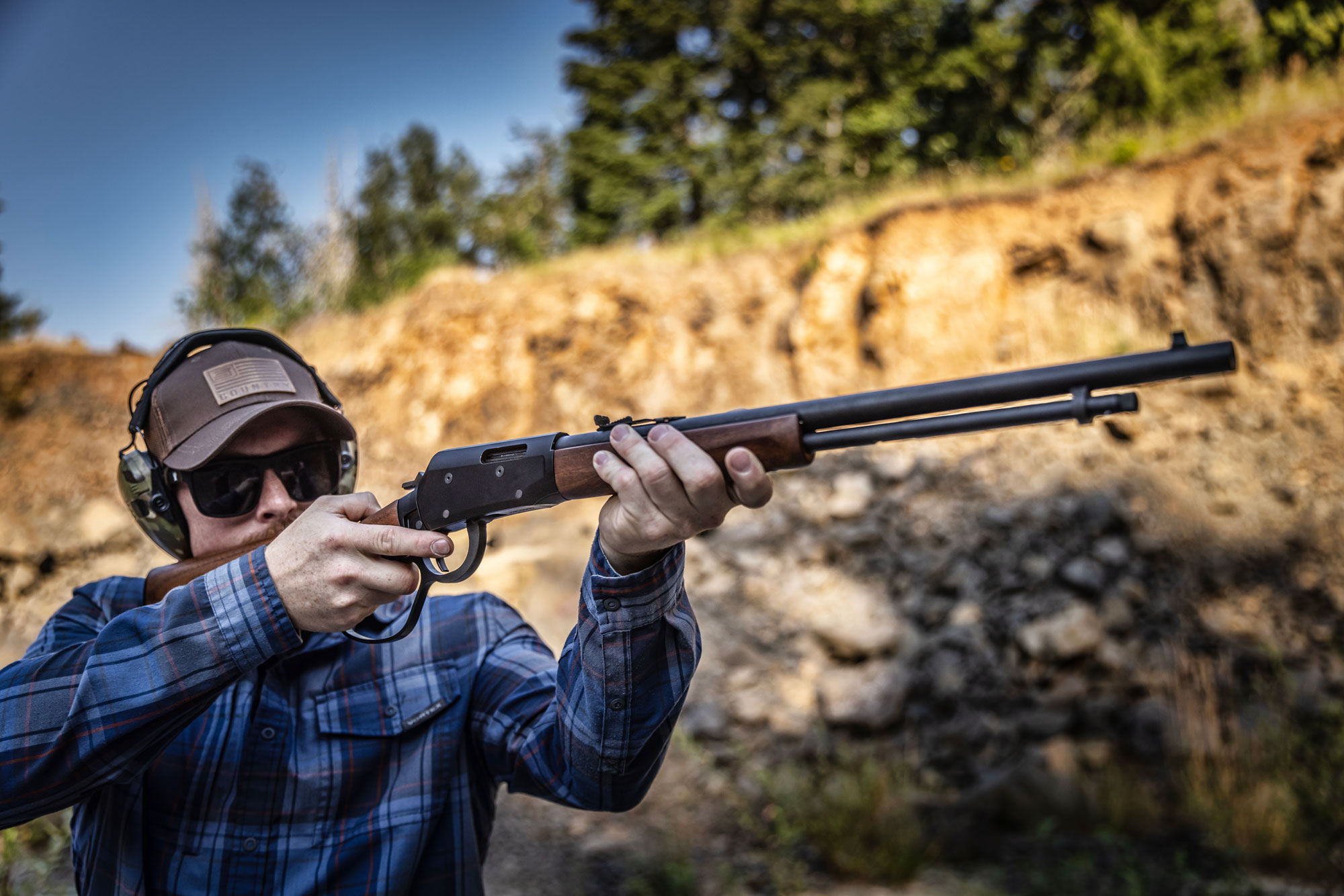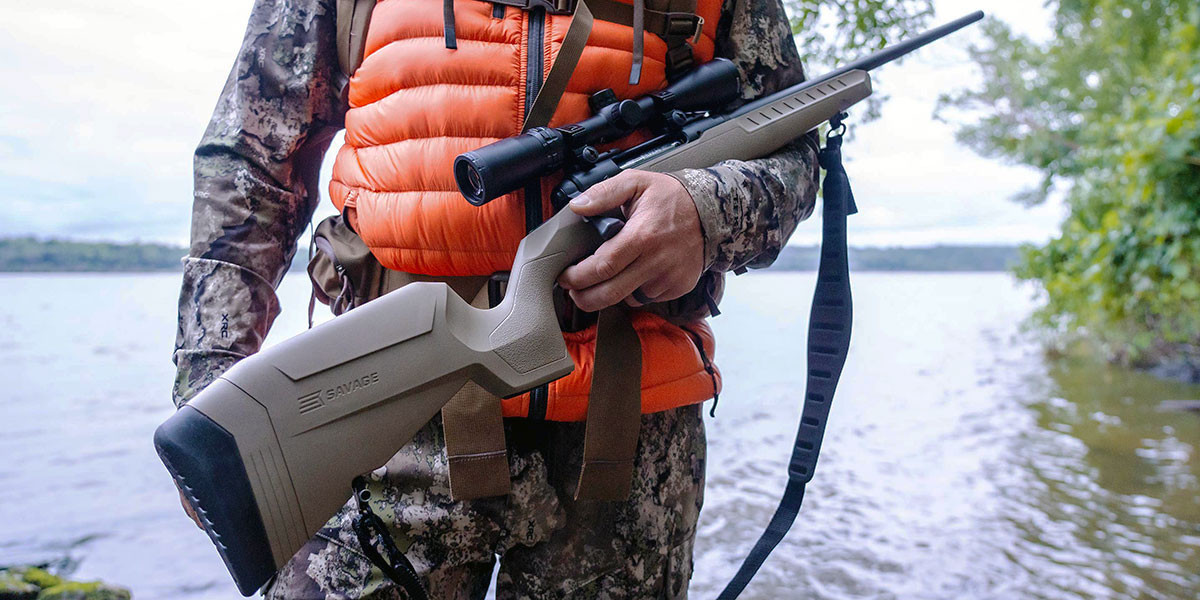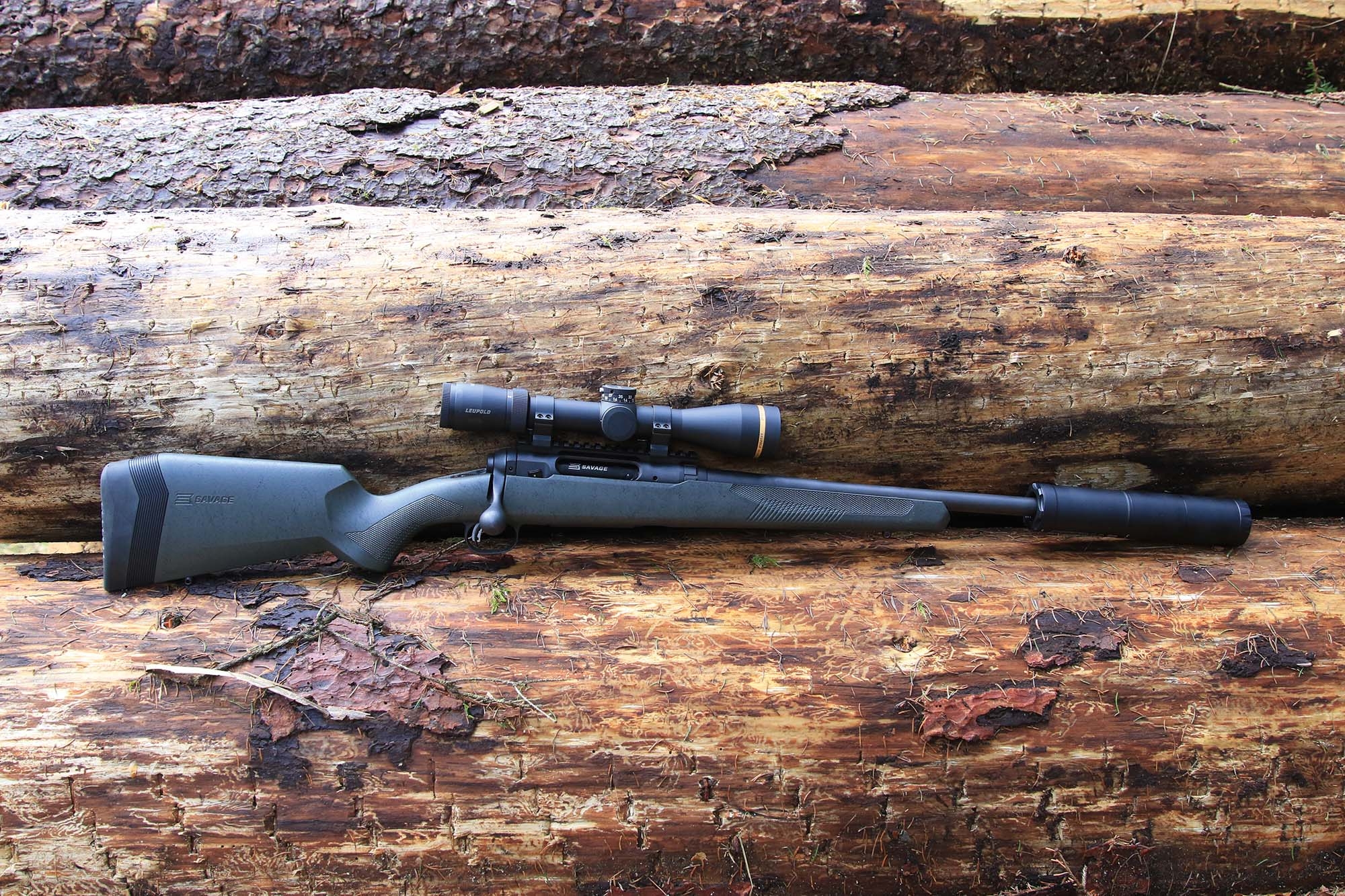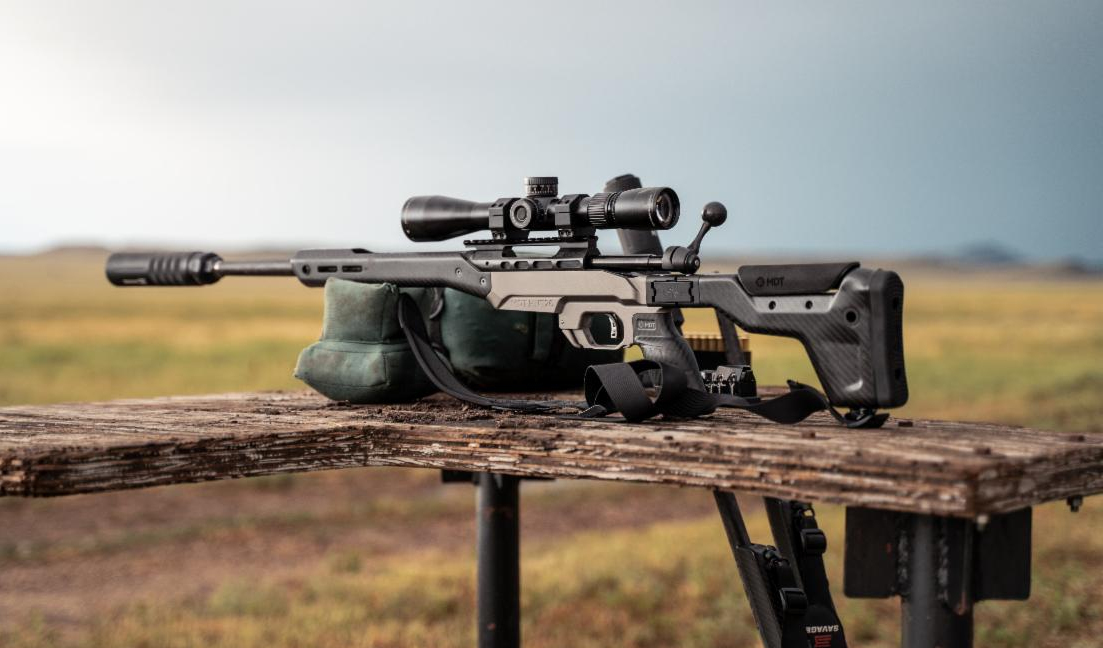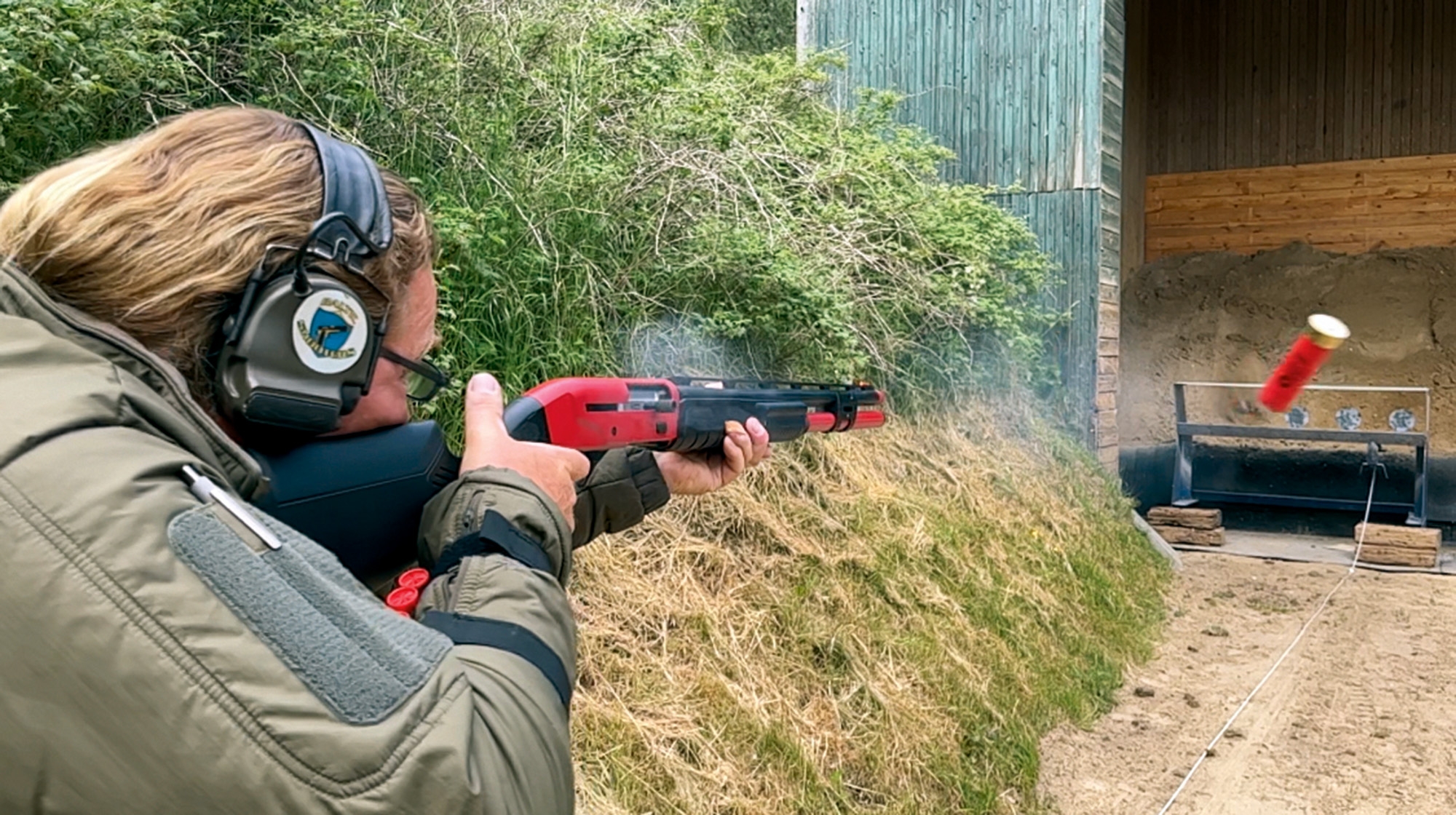This article is about twist rates, bullet weights and an accuracy test with the Savage 110 Carbon Predator. But first, we need to get some background information: the trend towards heavier bullets in .223 Remington was also started by the closely related 5.56x45 mm NATO military cartridge. Here, too, the bullet weight was increased over time in order to achieve better external ballistics. In contrast to the standard CIP twist of the .223 Rem. with 1:12" (one turn in 305 mm), the 5.56 NATO has a twist of 1:7"/178 mm. For AR-15 rifles, 1:8" and 1:9" twist rates are practically standard nowadays and a good compromise, as a (too) short twist can overload even light bullets in extreme cases. If the spin exceeds around 290,000 revolutions per minute, the bullets can literally burst after leaving the muzzle because the jacket can no longer hold on to the bullet core at the high rotational speed. However, anyone who listens carefully to the Hornady podcasts, for example, will certainly have noticed that this limit can also be higher with very good, smooth barrels that cut the jacket only minimally and do not "injure" it any further.

A racy predator rifle: Savage 110 Carbon Predator – The technical details (especially the barrel)
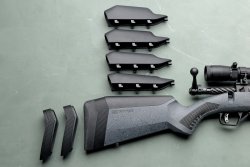
If a barrel can really achieve this, then it should be one of the quality level of Bartlein or Proof Research, for example, both of which are currently very popular among long-range competition shooters. Savage uses Proof Research barrels with a stainless steel core and carbon fiber wrapping in many models, of which the 110 Carbon Predator tested here is one of the newer ones. The barrel has a 5/8x24 UNEF muzzle thread as standard. As a typical varmint hunting rifle, it is designed for maximum accuracy and long shot strings. Accordingly, an adjustable AccuFit stock with three-dimensional AccuStock aluminium bedding was used along the entire length. This not only ensures that the accuracy and point of impact remain consistent even during long shot strings, but also prevents the barrel from being pressed into the fore-end when the rifle is used with heavy optics or bipod attachments. The carbon fiber barrel can also withstand longer shot strings, although a break should be taken after 15 to 20 shots. The grey stock with the black AccuFit inserts for height and length adjustment has a granite texture for the first time. This not only ensures a good grip, but also looks very attractive. The 110 model series from Savage, which is now the longest continuously manufactured bolt-action rifle system in the USA, is also characterised by the user-adjustable AccuTrigger and the tang-mounted three-position safety, which can be operated from both sides. In the center position, the latter allows loading and unloading while in the fully secured position it also provides a chamber lock. As a special feature, the Savage Carbon Predator has an AICS (Accuracy International Chassis System) magwell. This means that a wide range of magazine variants are available, from the 5-round magazine that is flush with the magwell to the 10-round magazine supplied here as standard in steel or polymer. Two Picatinny/Weaver mounting rails are also included with the rifle.
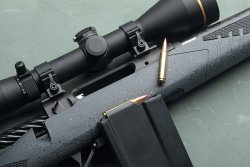
The test riflescope: Leupold VX-3HD 4.5-14x50
A Leupold VX-3HD 4.5-14x50 riflescope in the mid-price range (€1,219) with the new, fine Twilight Hunter Firedot illuminated reticle was selected to match the intended use. The scope with one-piece housing and 30-mm main tube is pleasantly light and compact at 31 cm long and 553 grams. The elevation adjustment turret is openly accessible and equipped with a zero-stop safety device to prevent unintentional dial movement. Because the riflescope is from the CDS series, you receive a replacement turret customized to your own ammunition free of charge. To use it, all you have to do is measure the distance to the target with a good laser rangefinder, which also takes the angle of fire into account, and then turn the dial to that number on the ballistic turret. An unbeatably fast and intuitive solution.
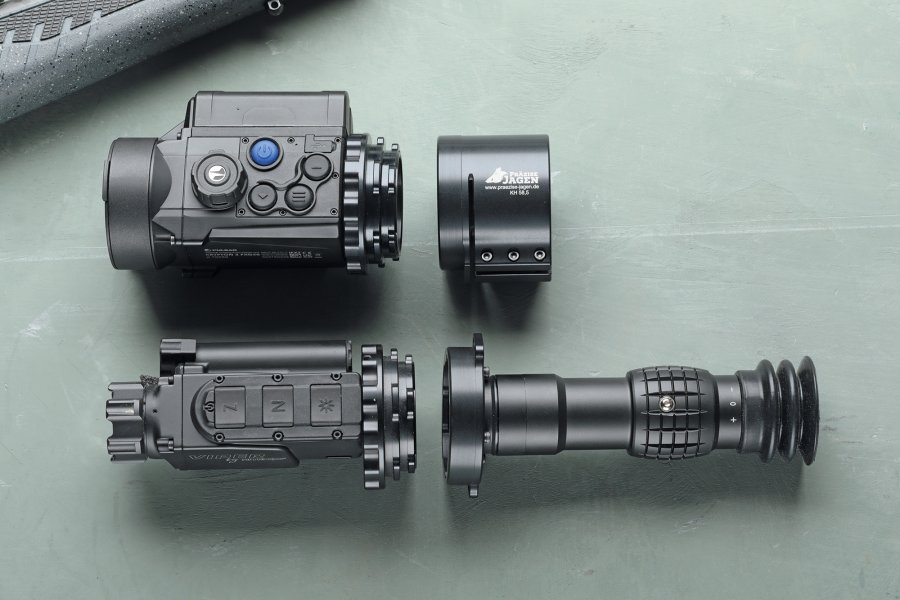
Short barrel costs velocity: what effect does the shorter barrel have in practice?
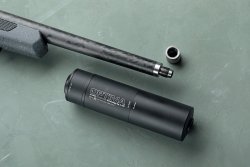
What is perhaps surprising is that even with the relatively small cartridge with relatively small amounts of rather fast-burning propellant, a shorter barrel length costs almost the same velocity as with cartridges in the .308 Winchester class and above. The powder manufacturer Hodgdon has published an interesting test in its current "Annual Manual" (available digitally in the app). Here, the barrel of a .223 Rem. was gradually shortened by 1"/25.4 mm and various loads were fired with light and heavy bullets and these were then also fired with fast and slow propellants. From the 24"/61 cm standard barrel length, to which most of the velocity specifications on the cartridge boxes refer, down to 16"/40.6 cm, the .223 Rem. lost a total of 70 m/s, or 3.45 m/s per cm, across all bullet weights and powder types. This is practically the same average as for .308 Win. & Co. With 40-grain bullets, the loss was slightly higher at 4.8 m/s per cm than with 60 or 77 grains at 3.2 m/s per cm. The difference between a fast and a slow propellant with the same bullet weight, however, was only a maximum of 1.8 m/s per cm, which is rather negligible. Incidentally, the greatest loss in velocity of 6.7 m/s per cm occurred when the barrel length was reduced from 20"/50.8 cm to 19"/48.3 cm. In practice, the 18"/45.7 cm barrel of the Carbon Predator nevertheless represents a good compromise between manoeuvrability and cartridge performance.
Reloading for the 1:7" twist: Hornady CX, ELD-X and A-TIP bullets
With the standard twist rate of the .223 Rem. according to CIP 1:12", bullets up to approx. 60 gr/3.9 g flat base or 62 gr/4.0 g FMJ can be used. The available factory loads with heavy bullets could all also be used from barrels with 1:8"/203 mm twist. Therefore, we also wanted to test the heaviest/longest bullets in .224"/5.69 mm diameter with handloads.
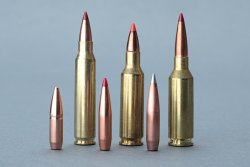
In our test, these were the 70 gr/4.5 g lead-free, monolithic Hornady CX expanding bullet, which we developed from the 5.56 NATO TAP military cartridge that is unfortunately not available in civilian form, the brand-new 80 gr/5.2 g Hornady ELD-X, which is also loaded in other calibers in the Precision Hunter ammunition series, and the 90 gr/5.8 g Hornady A-TIP match bullet. The latter features an aluminium tip to achieve not only a perfect aerodynamic shape but also an optimised centre of gravity. The bullets, which are manufactured sequentially, i.e. one after the other in a die set, are not finally washed or polished, but placed individually in special packaging by a robot so that they are not exposed to the slightest unnecessary contact. These bullets are used by many of the top PRS (Precision Rifle Series) and ELR (Extreme Long Range) shooters, which certainly speaks to their accuracy and consistency. Other interesting heavy .224 bullets include the 70 gr/4.5 g (min. 1:9" twist) or 85 gr/5.5 g (min. 1:7" twist) Nosler Accubond or Berger 90 gr/5.8 g Very Low Drag (VLD) (min. 1:7" twist). Sierra even manufactures a 95 gr/6.2 g MatchKing bullet, which actually requires a 1:6.5"/165 mm twist.
This is what came out of the test – Enlightening results in terms of bullet weight, twist rate, barrel and powder used
It should be noted that there are indeed light loads that still deliver perfect accuracy beyond the critical 290,000 rpm. On the other hand, the advantage of heavy bullets in terms of wind drift must be recognised. Despite the up to 200 m/s lower velocity, they have up to 50% less wind drift. In practice, this means that instead of 9 cm with a classic 55 gr/3.6 g V-Max at 904 m/s, with an 80 gr/5.2 g ELD-X at 773 m/s there is only 5.5 cm lateral drift. This shows that aerodynamic shape is more important than velocity.
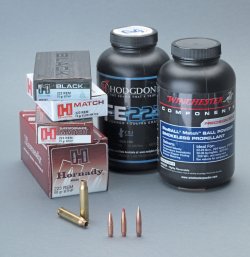
Fortunately, the MDT AICS metal magazine supplied also fits cartridges with an overall length of up to 60 mm, i.e. 2.6 mm longer than the maximum cartridge length according to CIP/SAAMI. The additionally tested Magpul AICS magazine even allows a cartridge length of 62.0 mm. The forcing cone in the Proof Research barrel also accepted the long bullets and cartridge lengths with sufficient non-rotating bullet travel (jump). It is particularly interesting here that the jump is sometimes lower with lighter bullets with a more traditional bullet shape (ogive) than with the long projectiles with a more aerodynamically modern, more efficient shape. In addition to some new bullets, we were also able to test two of the three new Winchester StaBALL powders. These are a new generation of ball powders which, for the first time, are just as temperature-stable as the best stick powders. In addition, there is a higher power conversion and an additive that minimises bullet deposits in the barrel. The good loading density and good pouring behaviour in powder dispensing devices, which ball powders generally have, are of course also present. In this and other tests, the powders have so far been characterised by good performance and, above all, good accuracy. Incidentally, the myth that double-base powders burn hotter than single-base powders is no longer true. With modern propellants, the burning temperature can be chemically controlled much better than in the past, so that the difference between "hot" and "cold" powders is only around 10%. In the two tests in which one or two of the StaBALL types were tested against the tried and tested Hodgdon CFE223, StaBALL 6.5 (burning rate similar to Hodgdon 4350) clearly emerged as the most accurate.
Savage 110 Carbon Predator in .223 Rem: specs and price of the test gun
| Model: | Savage 110 Carbon Predator |
| Caliber: | .223 Remington; also available in: .22-250 (22" / 1:12"), 6 mm ARC (18" / 1:7.5"), 6.5 Creedmoor (18" and 22" / 1:8"), .300 Blackout (16" / 1:8"), .308 Win. (18" / 1:10") |
| Barrel: | 18"/457 mm long Proof Research barrel made of stainless steel with carbon fiber wrapping and 5/8x24 muzzle thread |
| Magazine: | Metal AICS box magazine for 10 rounds (other models, also made of polymer and with lower capacity/flush-fitting, are available separately) |
| Stock: | Adjustable Savage AccuFit stock with three-dimensional AccuFit aluminium bedding, grey with granite texture |
| Trigger: | Savage AccuTrigger, adjustable from 680 to 1,814 grams |
| Safety: | Three-position safety device on the tang with chamber lock |
| Overall Length: | 97.8 cm (depending on the selected stock length, 32.4 - 34.9 cm+) |
| Scope Mounts: | Two-piece Picatinny/Weaver rails included in the scope of delivery |
| Weight: | 3.38 kg |
| Price (RRP in Germany): | 2,199 euro |
Conclusion: Savage 110 Carbon Predator with heavier bullets
In our test, the Savage 110 Carbon Predator shone above all with the heavier bullets with match accuracy of around ½ MOA down to ¼ MOA in some cases. But even the lighter factory ammunition types produced usable hunting results despite the very short twist. The advantages of the heavy bullets in terms of wind drift, certainly the most difficult hurdle when shooting at targets or varmint, are pleasing and astonishing. No wonder that new cartridges have been developed in this area with the .224 Valkyrie, .22 Nosler and now also with the .22 ARC, which can fire this bullet type with significantly more power. It will be interesting to see how the new 80 gr/5.2 ELD-X bullet from Hornady performs on roe deer. All in all, the Savage 110 Carbon Predator is an almost luxuriously equipped bolt-action rifle for predator hunting and/or target shooting.
Further information on the Savage 110 Carbon Predator can be found on the Savage website. You can find out more about the bullets used on the Hornady website.



